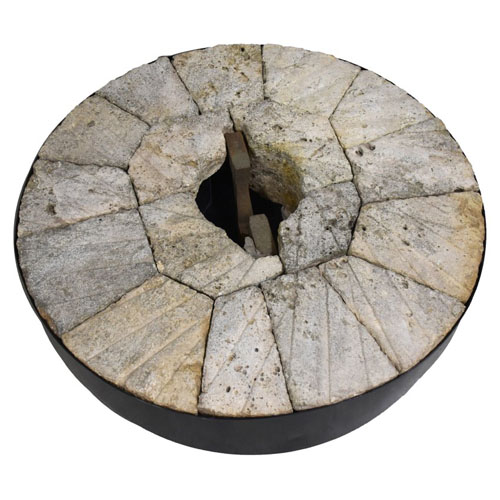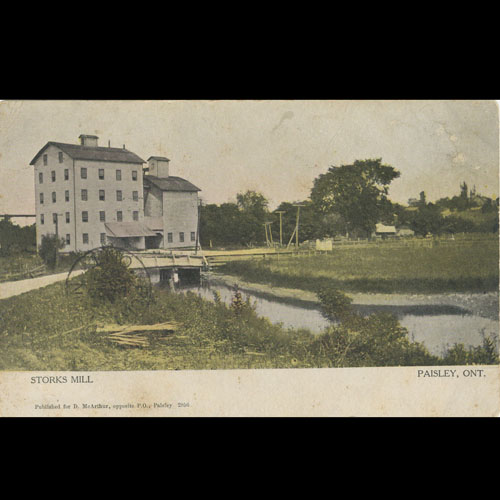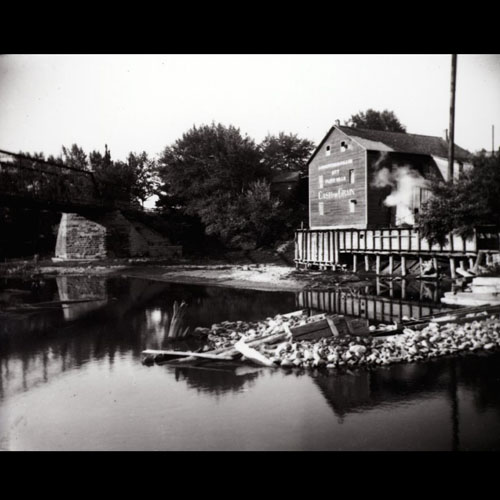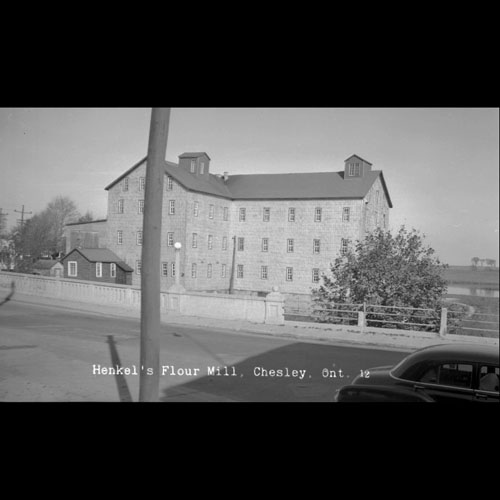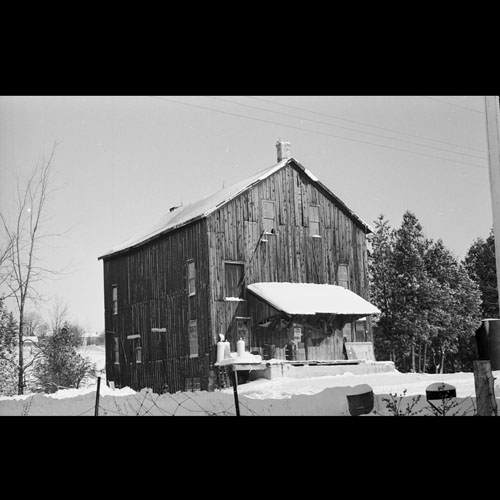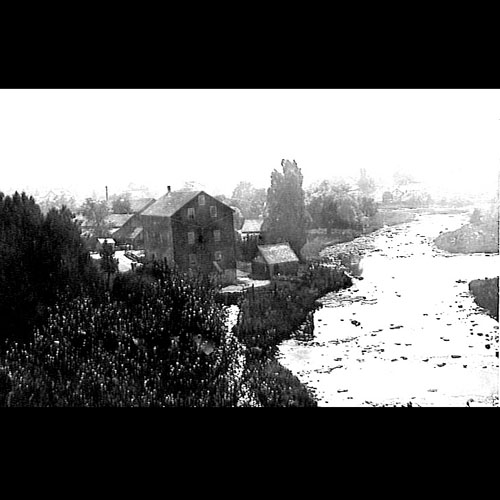Grinding grain is an arduous and time-consuming task that was necessary for the survival of settlers. Before the 1850s settlers were required to travel to Goderich or Grey county to have their grain ground. As there were no roads, settlers did this journey in the winter using ‘jumpers’ or modified sleighs. This journey could take several weeks including travel time and waiting time at the mill.
Grist and flour mills were so imperative, that the first municipal bonus granted in Bruce promoting industrial growth, was to Kincardine for the erection of a mill in 1853. By the early 1850s three mills served the south part of Bruce County, including William Sutton’s in Kincardine (1852), Joseph Walker’s in Walkerton (1853), and Reverend William Fraser’s in Lorne. These three served the south part of the County, but it wasn’t until 1855 that those living in more northern parts had a mill of their own with the opening of Schantz’s mill located on Mill Creek in Port Elgin.
Schantz purchased the Lot 11, Concession 8 of Saugeen Township and the surrounding land from the Crown in 1853. A sawmill was located on this lot, built by David Kennedy and George Butchart, and is featured on the Township survey done in 1851. At the time of the survey, according to the surveyor, Alexander Vidal, the sawmill had been abandoned, but the spot was optimal for a mill.
Schantz brought the millstones over from Scotland in 1854 and the mill began operation in 1855. The need for mills was so great that Schantz’s mill ran night and day, Sunday being an exception, and the wait time was over a month. More people, meant the need for more mills. 1855 also saw the opening of Valentine’s mill in Paisley, and Reekie’s Mill at Armow.
The rest of the 1850s and 1860s had grist and flour mills popping up throughout the County and most larger communities, including those up the Bruce Peninsula, had one by 1880. The majority of the mills were originally run using water. In 1871, a survey showed that two mills used steam and one mill used both water and steam. By 1871 there were also two dedicated oatmeal mills in operation run by G.S Short and Archibald MacDonald.
At the time Bruce county was establishing its mills, milling technology was changing. The large round millstones were being replaced with roller mills. Unfortunately, the 1871 survey does not include which mills were using millstones versus roller mills.
With the rise of growing urban centres, and the establishment of grocers and general stores, who also sold flour, the need of the rural mill serving the surrounding citizens gradually went by the wayside. However, many mills lasted well into the 20th century and participated in both the local and larger markets.

